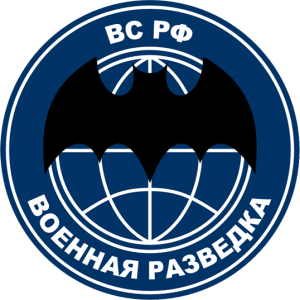 The only major Russian service which, as we have indicated, is not a direct heir of the KGB is the GRU (Glavnoye Razvedyvatelnoye Upravlenie), military unit 44388, whose aim is to provide intelligence to the Ministry of Defense, the military leadership and Russian armed forces as a whole. This service is dedicated to military intelligence, from strategic to operational, working not only in an exclusive sense of defense, but also encompassing other aspects such as politics or economy linked to the military sphere, and especially foreign intelligence – sometimes with the SVR. Since 1996, it has been entrusted with the mission of acquiring information on ecology and the environment. In order to execute these tasks, the GRU has all kinds of capabilities, from IMINT to HUMINT, through OSINT and, of course, SIGINT, capabilities that give it a sphere of action and international influence and that allow the GRU to “act in any point of the world where the need might arise, “according to statements by General Valentin Vladimirovich Korabelnikov, in an interview granted in 2006, when he was Director of GRU.
The only major Russian service which, as we have indicated, is not a direct heir of the KGB is the GRU (Glavnoye Razvedyvatelnoye Upravlenie), military unit 44388, whose aim is to provide intelligence to the Ministry of Defense, the military leadership and Russian armed forces as a whole. This service is dedicated to military intelligence, from strategic to operational, working not only in an exclusive sense of defense, but also encompassing other aspects such as politics or economy linked to the military sphere, and especially foreign intelligence – sometimes with the SVR. Since 1996, it has been entrusted with the mission of acquiring information on ecology and the environment. In order to execute these tasks, the GRU has all kinds of capabilities, from IMINT to HUMINT, through OSINT and, of course, SIGINT, capabilities that give it a sphere of action and international influence and that allow the GRU to “act in any point of the world where the need might arise, “according to statements by General Valentin Vladimirovich Korabelnikov, in an interview granted in 2006, when he was Director of GRU.
The GRU is undoubtedly the most opaque of Russian services and arguably the best of them; it is a group that maintains certain Soviet reminiscences – remember that it survived the KGB – and even that it considers “westernized” other services like the FSB. As a matter of curiosity, the GRU recruits its agents among the “proletarian” classes, preferably personnel without knowledge of languages, and among its supposed tasks is to bury weapons in hostile territory to be able to use them in case of conflict. It does not have a counterintelligence service (a function carried out by the FSB) or a press office (actually, the GRU is no more than a General Directorate within the Russian Ministry of Defense) or an official website ([1]). Thanks to its work methods, it is the intelligence service that has had the least deserters in Soviet and Russian history.
The GRU was directed by General Igor Sergun until January 2016, but after the sudden death of the General (nothing mysterious, just a heart attack), since February 2016, General Igor Korobov is in command. In both cases they are General Lieutenants, three stars, in front of the Army Generals of the FSB or the FSO. Although the personnel and budget data of the GRU are obviously classified, it is estimated that more than 25,000 staff members make up this service. In relation to its annual budget, no significant information has been found in public sources, the data being always masked in general budgets of the Russian Ministry of Defense.
As indicated, the GRU is a General Directorate of the Russian Ministry of Defense. It is structured in fifteen directions ([2]), focusing the cyber capacities of the GRU in the Second Direction and in the Sixth Direction, as well as in the Eighth Department, responsible for the security of internal communications of the GRU. The Sixth Direction is responsible for electronic intelligence, and historically it has been an active group in this area, operating signal interception stations from Cuba to Vietnam, passing of course by legal residencies of the GRU in different countries. Apparently, this GRU Directorate has the closest capabilities, especially in the military field, which we call CNO, and is capable of intercepting signal information around the world. This Sixth Direction is composed of at least four divisions ([3]); The First Division is dedicated to SIGINT (in this one the GRU Decrypt Service is framed) and the Second to ELINT, while the Third Division is responsible for the maintenance of the interception equipment and the Fourth is focused on the permanent tracing of signals. The Second Division (which includes GRU Special Forces, Spetsnaz) has seven major divisions, three of which directly relate to SIGINT, encryption and communications security at a more operational level than the Second.
In addition to the GRU, the Russian Ministry of Defense has more capabilities focused on electronic warfare, cybersecurity or computer security with a complex structure, detailed structure in the excellent reference [4] that we have already cited in previous posts in this series. For example, Military Unit 11135, 18th CRI (Central Research Institute) is the main signal intelligence research capability of the Russian Ministry of Defense, including research and development in wireless devices, SCADA systems or electromagnetic protection systems. Also as a research institute is Unit 01168, 27th CRI, in this case in the field of information technologies and command and control systems.
References
[1] Konstantin Preobrazhensky. GRU: Obscure Part of Russian Intelligence. Journal of Defense Management. Volume 2. Issue 2. Marzo, 2012.
[2] Richard Bennett. Espionage: Spies and Secrets. Virgin Digital, 2012.
[3] Andrew Jones, Gerald L. Kovacich. Global Information Warfare: The New Digital Battlefield. Segunda edición. CRC Press, 2016.
[4] Jeffrey Car. Inside Cyber Warfare: Mapping the Cyber Underworld. 2nd Edition. O’Reilly, 2011.
